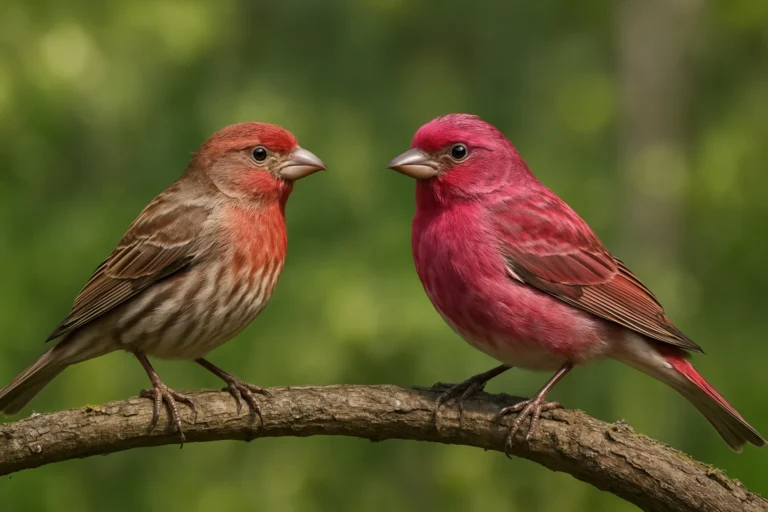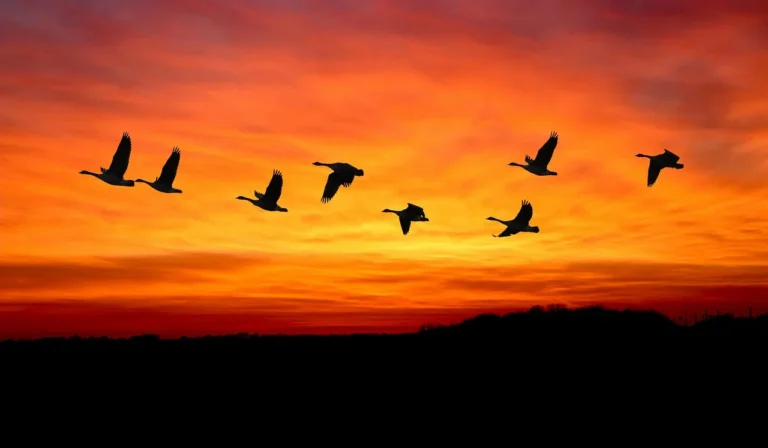Have you ever spotted a new bird and wondered what it was? If so, there’s no need to worry—bird identification is easier than you think! As a beginner in birdwatching, you might find it challenging at first. However, with time and by using some valuable identification techniques, recognizing different birds will become much easier.
Even seasoned birders sometimes fail to recognize certain birds. The key is not to let this setback ruin your birdwatching fun. Here are some of the most common identifying features of the birds that you need to focus on:
- Habitat: Where do you see the birds?
- Size: Is it small, medium, or large?
- Silhouette: What is its body shape?
- Beak Type: What does its beak look like?
- Color and Markings: Does it have any distinct features?
- Behavior: How is it acting?
- Sound: What sound does it make?
So, are you ready to learn more? Keep scrolling down, as this bird identification guide will answer the most commonly asked question of how to identify birds.
How to Identify Birds Easily: What to Focus On
Remember, if you want to become a pro birdwatcher, you must be adept at identifying our feathered friends. It doesn’t have to be tricky if you know what to look for. Focus on the following things, and you will be good to go:
1. Habitat Matters
Here is what you should start with: focus on the habitat of an avian. After all, habitat is its home address that tells a lot about where you’re likely to find it. You will be surprised to learn that our feathered friends are picky about their surroundings. Look at woodpeckers, they love to live in forests with plenty of old trees around. Shorebirds like sandpipers, on the other hand, prefer beaches and wetlands.
Grassy fields are usually more inviting for sparrows or larks. If you visit city parks, however, you will spot pigeons and robins. But wait a minute, there is something else that you need to know. Birds living within the same habitat, too, have their designated spots. Some, like warblers, stay high in the treetops, while thrushes prefer hopping around on the forest floor. So, the crux of the matter is that the more you pay attention to where birds like to hang out, the easier it becomes to identify them.
2. Size: Small, Medium, or Big?
Want to sharpen your bird ID skills? Start by paying attention to their size instead of relying only on an online bird finder. Try to remember the last avian you saw. Was it small like a hummingbird, medium-sized like a robin, or as large as an eagle? For many birdwatchers, size is one of the first things they notice, and, amazingly, it also serves as a big clue about a bird’s identity. It helps you narrow down your options.
For instance, if you see a small bird flitting through the bushes, you’re probably looking at a sparrow or a warbler, not a hawk or a goose. It might be challenging to estimate the size of a bird. Comparing it to other feathered creatures is, therefore, important to ID it correctly. You will also need to combine it with other critical details, such as shape, color, and habitat. It will make the whole venture a lot easier for you. With that said, take size as the starting point of bird recognition.
3. What is the Bird’s Body Shape?
Birdwatcher or not, everyone knows that all birds have different shapes. In fact, an avian’s appearance can be a key feature for its recognition. It helps you figure out what you’re looking at, even from a distance. Some feathered friends, like swallows, have sleek and streamlined bodies, built for fast and graceful flight. Owls, on the flip side, have beautifully rounded, bulky bodies well-suited for silent hunting.
Similarly, hawks have broader wings for soaring, while hummingbirds appear tiny and compact, which is suitable for hovering. In short, birds are perfectly built for their respective lifestyles, so they look different from one another. Once you start noticing these differences, you’ll see patterns that make identifying birds faster and more fun. So, take a second look at its shape the next time you witness an avian.
4. What Type of Beak Does it Have?
You might not pay heed to a bird’s beak when you catch a glimpse of it. However, let me tell you something interesting. This seemingly unnoticeable feature that many new birdwatchers ignore plays a critical role in avian identification. Beaks usually tell you what they eat, offering a major clue in ID:
- Short, Thick Beak: Seed-eater (e.g., finches, sparrows)
- Hooked Beak: Bird of prey (e.g., hawks, eagles)
- Long, Thin Beak: Nectar or insect feeder (e.g., hummingbirds, warblers)
- Flat, Wide Beak: Water bird (e.g., ducks, geese)
Matching the bird beak shapes with their behavior can further reveal their identity. Try to observe whether it is poking into flowers, digging in the mud, or grabbing insects. Woodpeckers, for example, have chisel-like beaks for drilling into tree bark, while shorebirds have long, curved beaks for probing in the sand.
5. Bird Colors and Markings
What’s considered a personal fashion statement in the world of birds? Congrats! Your answer is correct—it’s their colors and markings. These assist you in telling species apart at a glance. Some birds, like cardinals and blue jays, have bold, eye-catching colors, while others, like sparrows, blend into their surroundings with earthy tones. Along with colors, you also need to look for prominent features, such as:
- Bright patches on the wings
- Eye rings
- Streaks on the chest
- Contrasting head markings
- Wing bars
- Speckled or mottled back
But, be careful. Colors can sometimes be deceiving, too. How? Let’s take the example of bluebirds, which aren’t always blue. Similarly, the purple finch actually has a rosy or raspberry color rather than true purple. This ID factor can also be misleading because light conditions and molting seasons can change how a bird looks.
6. What is the Bird Doing? (Behavior Clues)
Birds, too, have personalities. Here, we’re talking about their behaviors. The behavioral characteristics of birds can also tell a lot about their type. For instance, you might see some hopping, others walking, and a few diving into the water. Carefully watch how a bird moves, eats, or interacts with its surroundings.
Here’s a table of common bird behaviors that can help with identification:
| Behavior | Description | Examples |
| Perching | Birds rest on branches, wires, or fences. | Sparrows, Finches, Warblers |
| Ground Foraging | Birds hop or walk on the ground to find food. | Robins, Thrushes, Pigeons |
| Hovering | Staying in place mid-air while feeding or hunting. | Hummingbirds, Kestrels |
| Diving | Plunging into water for fish or prey. | Kingfishers, Gannets, Ospreys |
| Wading | Walking in shallow water while searching for food. | Herons, Egrets, Sandpipers |
| Soaring | Gliding in circles using air currents. | Hawks, Eagles, Vultures |
| Tail Wagging/Flicking | Moving tail up and down while perched. | Phoebes, Wagtails |
| Wing Flashing | Spreading wings suddenly to flush out insects. | Mockingbirds, Thrashers |
| Drumming | Rapid pecking on wood for communication or feeding. | Woodpeckers |
| Puffing Feathers | Birds fluff up to stay warm or appear larger. | Pigeons, Owls, Jays |
| Courtship Displays | Unique dances, calls, or feather displays to attract | Peacocks, Manakins, Birds of Paradise |
7. Bird Sounds: What Calls and Songs Do They Make?
A bird singing is one of the most soothing phenomena in the world. Learning to identify a bird by its call is also a valuable skill that every birder should learn. Remember, avians don’t just look amazing; they sound unique, too. According to experts, their sounds are among the best clues for ID. In fact, it can be a useful tool when you are unable to get a clear view. Some birds, like robins and nightingales, sing beautiful, melodic tunes, while others, like crows and blue jays, have harsher, more raucous calls.
You can narrow down the possibilities by paying heed to whether a bird is singing a long, musical song or making short, sharp chirps. Songs, in essence, tend to be more complex and longer, leveraged by males to attract mates or defend their territories. The sweet whistle of a blackbird, say, is a perfect example. Calls, on the flip side, are usually shorter and used for communication. A hawk’s piercing scream fits this scenario. It might take time to tune into these sounds. With time, however, you will become adept at it.
Bonus Tips for Quick Bird Identification
Recognizing birds is definitely not an easy task. It requires passion, patience, and consistency. Although the above bird identification guidelines are enough to give you a start, here are some bonus tips to make the journey easier for you:
- Use a bird ID app like Merlin Bird ID
- Leverage a bird guide, such as Audubon Birds
- Observe flight patterns
- Focus on tail shapes and movements
- Notice the bird’s feeding behavior
- Check the eye patterns
- Watch how a bird interacts with other feathered creatures
- Don’t forget to take notes or photos
- Be patient and keep practicing
Following this bird identification guide will help you become a more confident and efficient bird watcher. Oh! And just remember, if a bird stares at you too long, it’s probably trying to identify you back.
Start Identifying Birds Like a Pro
A true bird watcher, they say, is also a sharp bird identifier. Recognizing these beautiful winged creatures might be challenging, but it sure is a rewarding experience. Consider factors like habitat, size, body shape, beak shape, color, specific markings, and behavior while trying to identify a bird. Using a bird identification app or guide can also be helpful. Be sure to visit our blog for more tips, insights, and exciting bird facts.


